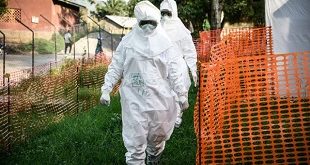
That’s what 115 years of data tells scientists about battle with malaria
Kampala, Uganda | BOB SNOW | Professor of Malaria Epidemiology, Centre for Tropical Medicine & Global Health, Nuffield Department of Medicine, University of Oxford
It’s difficult to accurately measure the number of people who get malaria each year. This is because the malaria symptoms are shared with many other diseases that lead to death or illness, especially among young children.
However, there is a measure of malaria that is precise. Testing for the malaria parasite among large numbers of people provides a Parasite Rate, a useful measure of the quantity of malaria in any given area.
Surveys are done on a known number of people by malaria control programmes, non-governmental organisations and researchers. Although they don’t tell us how many people are sick, the number of infected people in an area is indicated.
We spent the last 21 years tracking down malaria survey reports done across Africa. The greatest challenge was that they were mostly hidden in old government archives or curated by the World Health Organisation.
Most of the records were either poorly stored, burnt or were missing. In some countries like Kenya, Senegal, Tanzania, South Africa, Botswana, Namibia and Burkina Faso the surveys dated back 1950s. Conversely, recent surveys have been easier to locate through more modern web based searches.
To obtain village or school level data published in most journals or reports, scientists and government officials provided the raw data. This is a testament to a new era of data sharing where over 800 people have contributed finer resolution data.
The final report covers over 50,000 surveys dating back 115 years. This is the largest repository containing information on over 7.8 million blood tests for malaria. We analysed malaria infection prevalence for each of 520 administrative units across countries south of the Sahara and Madagascar for 16 time periods.
The study suggests that the prevalence of malaria infection in sub-Saharan Africa today is at the lowest point since 1900.
Declining malaria cases
Overall, there was a decline in the number of children infected with malaria at 24% between 2010 and 2015 compared to 40% between 1900 and 1929.
The biggest historical reduction in malaria coincided with the introduction of new tools to fight malaria. After the Second World War, the discovery of DDT for indoor spraying and chloroquine drugs made a difference in treating malaria.
Investment in malaria control in Africa has been sporadic in the past. The world has seen a reduction in malaria over the last 15 years, based largely on the use of treated bed nets and antimalarial drugs. If we take our eye off the ball then rising drug resistance and falling control will lead to the sorts of increases we saw in the 90s.
Again, in 2005 the rolling out of insecticide treated bed nets and new anti antimalarial drugs, led to a further drop of malaria cases.
The lowest periods of malaria prevalence were evident when the international community abandoned specific malaria control investment in Africa, during the late 1960s, through the 1970s and early 1980s. As a result, every fever was treated with chloroquine, an amazingly effective drug. There was a prolonged drought across the Sahel. This was the perfect lull.
However, from the late 1980s chloroquine resistance expanded across Africa. It was made worse in the 1990s when unprecedented rainfall led to flooding causing major malaria epidemics. Governments in Africa were unprepared because they did not have significant mosquito prevention and management strategies in place. Malaria cases increased and the prevalence was similar to those described before the Second World War. The perfect storm.
It took over five years for the international community to appropriately respond by providing free, and effective malaria treatments to vulnerable persons in the affected countries. They ensured access to effective malaria prevention tools which a decade earlier had reduced the malaria risk by half.
The Global Fund’s financial boost and the revisions of the 2005 world malaria report led to one of the largest drops in malaria infection prevalence witnessed.
More effective strategies needed
The gains made after 2005 have stalled since 2010. Declining malaria funding, insecticide and drug resistance are the obvious threats to the elimination of malaria in Africa.
Despite an impressive overall decline in malaria prevalence since 1900, Africa has the highest infection risks globally. Large parts of West through to Central Africa and down to Mozambique continue to have intense malaria transmission.
Unfortunately DDT, new insecticides, chloroquine and new combination treatments and insecticide treated bed nets have not been effective enough to shrink this high malaria burden. We need new tools.
What next?
There is an urgent need to focus on the high burden countries in Africa. They should not be left behind in a new global agenda for malaria elimination.
It is complex and predicting a future malaria landscape based on climate or economic development alone would be foolhardy. It needs a more integrated approach.
What we can say however is that the malaria map in Africa might shrink a bit at the margins but that middle belt isn’t going anywhere in our lifetimes with what we have at our disposal now – bed nets and drugs.
When insecticide and drug resistance becomes established, unless we have new classes of both drugs and insecticides or a natural period of drought, malaria will revert in large parts of Africa to what it was in the 1990s; another perfect storm.
Bob Snow is professor of Malaria Epidemiology, Centre for Tropical Medicine & Global Health, Nuffield Department of Medicine, University of Oxford
 The Independent Uganda: You get the Truth we Pay the Price
The Independent Uganda: You get the Truth we Pay the Price


